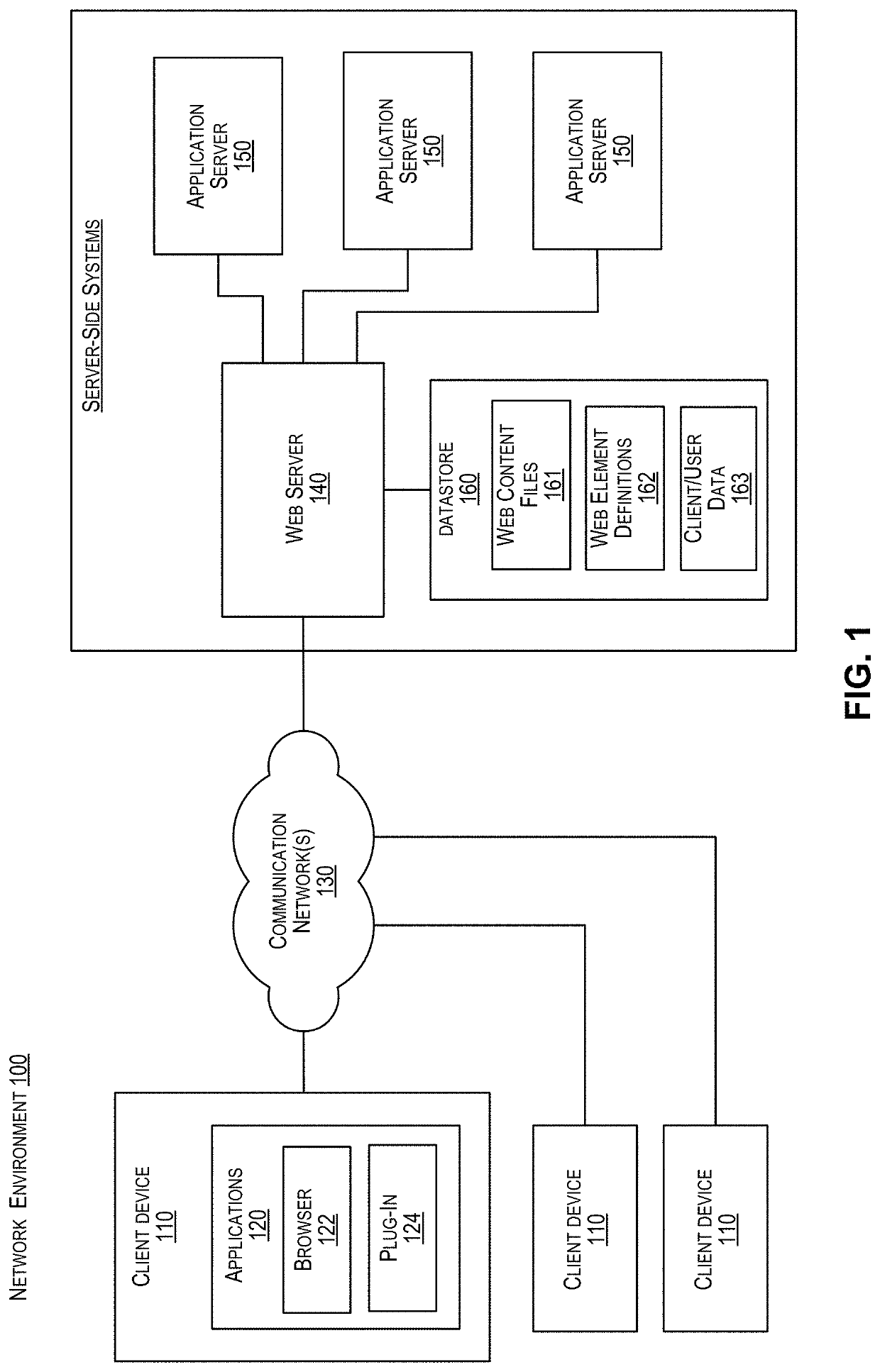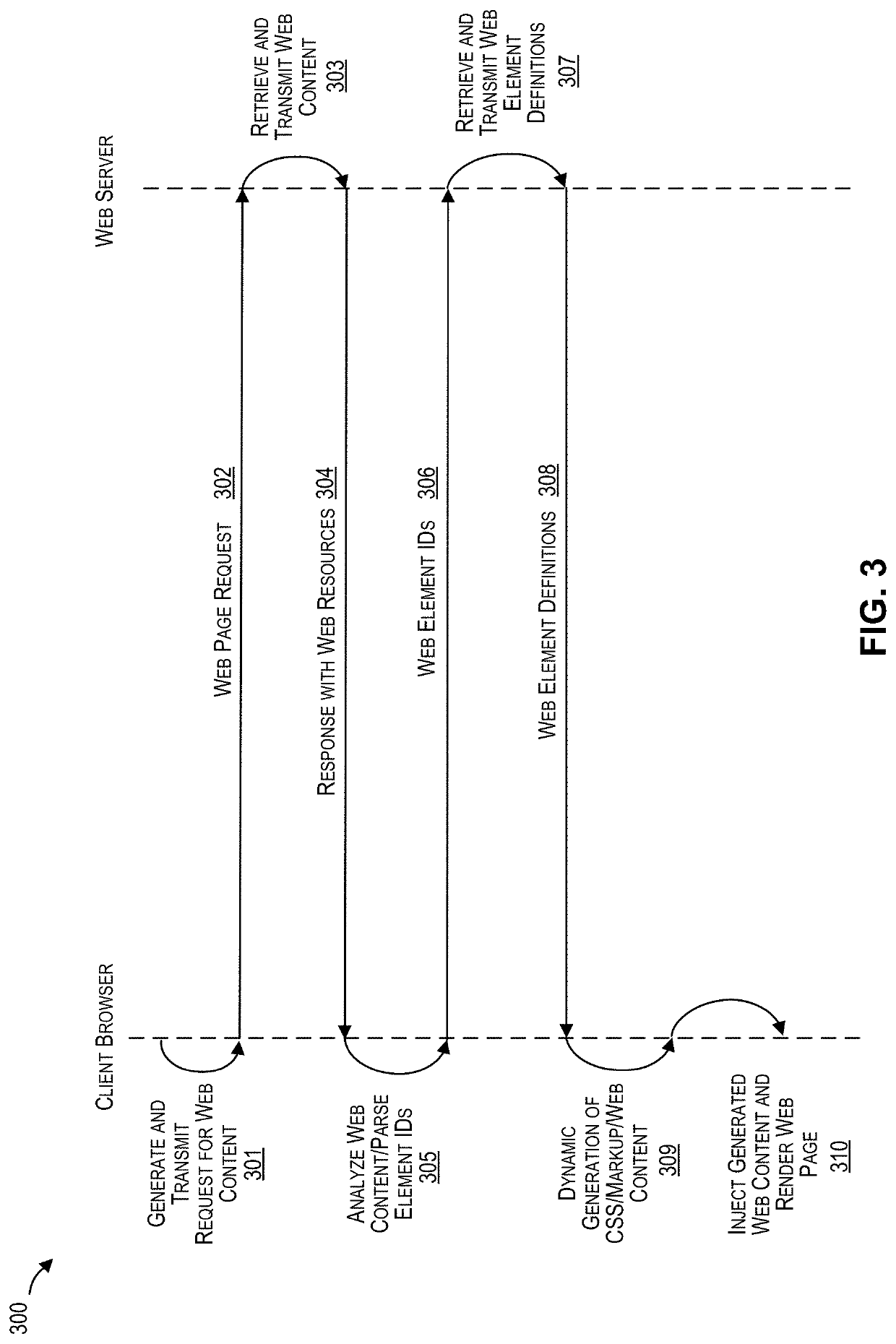Client-side customization and rendering of web content
a client-side customization and web content technology, applied in the field of client-side customization and rendering of web content, can solve the problems of limited customization features and web content providers that may support limited user-customization of web pages, and achieve the effect of avoiding additional software development, testing, deployment processes, and significant backend processing resources
- Summary
- Abstract
- Description
- Claims
- Application Information
AI Technical Summary
Benefits of technology
Problems solved by technology
Method used
Image
Examples
Embodiment Construction
[0015]In the following description, for the purposes of explanation, specific details are set forth in order to provide a thorough understanding of various implementations and examples. It will be apparent, however, that various implementations may be practiced without these specific details. For example, circuits, systems, algorithms, structures, techniques, networks, processes, and other components may be shown as components in block diagram form in order not to obscure the implementations in unnecessary detail. The figures and description are not intended to be restrictive.
[0016]Some examples, such as those disclosed with respect to the figures in this disclosure, may be described as a process which is depicted as a flowchart, a flow diagram, a data flow diagram, a structure diagram, a sequence diagram, or a block diagram. Although a sequence diagram or a flowchart may describe the operations as a sequential process, many of the operations may be performed in parallel or concurre...
PUM
 Login to View More
Login to View More Abstract
Description
Claims
Application Information
 Login to View More
Login to View More - R&D
- Intellectual Property
- Life Sciences
- Materials
- Tech Scout
- Unparalleled Data Quality
- Higher Quality Content
- 60% Fewer Hallucinations
Browse by: Latest US Patents, China's latest patents, Technical Efficacy Thesaurus, Application Domain, Technology Topic, Popular Technical Reports.
© 2025 PatSnap. All rights reserved.Legal|Privacy policy|Modern Slavery Act Transparency Statement|Sitemap|About US| Contact US: help@patsnap.com



